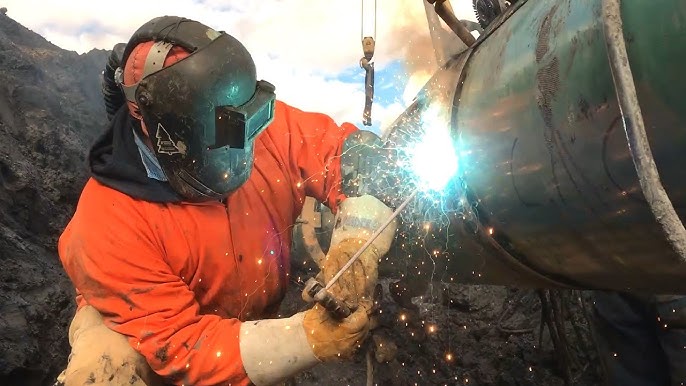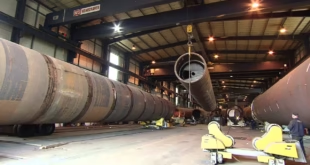Methods of Pipeline Welding
Pipeline welding is the backbone of industries that rely on pipelines to transport vital resources such as oil, gas, water, and chemicals. A poorly executed weld can result in leaks, environmental damage, or costly repairs, making welding a highly specialized and critical task. This comprehensive guide dives deep into the various methods of pipeline welding, preparation processes, and the challenges welders face, ensuring you have a well-rounded understanding of this essential trade.
Introduction to Pipeline Welding
Importance of Welding in Pipelines
Pipeline welding is more than just fusing two sections of pipe; it’s about ensuring the integrity of a system designed to handle immense pressure and often hazardous materials. A strong weld prevents leaks, resists corrosion, and withstands temperature fluctuations. Pipelines are used in industries where reliability is non-negotiable, such as energy, water supply, and manufacturing. Therefore, proper welding techniques are crucial to the pipeline’s safety and longevity.

Overview of Pipeline Welding Methods
There are various methods of welding pipelines, each suited to specific materials, environmental conditions, and project requirements. While some methods like Manual Metal Arc Welding (MMAW) are versatile and widely used, others like Submerged Arc Welding (SAW) are ideal for high-efficiency, large-scale applications. Choosing the correct method depends on factors like pipe thickness, material composition, and the project’s location (e.g., onshore, offshore, or underground).
Preparing for Pipeline Welding
Safety Considerations
Pipeline welding involves potential hazards, including high heat, toxic fumes, and heavy equipment. Welders must prioritize safety by wearing personal protective equipment (PPE) such as welding helmets, gloves, goggles, and flame-resistant clothing. A well-ventilated work area is critical, especially when using methods that generate harmful gases. Following safety protocols not only protects welders but also ensures compliance with industry regulations.
Tools and Equipment Required
The right tools can make or break a welding job. Essential equipment includes:
- Welding Machines: Different machines are used for specific methods, such as TIG, MIG, or Stick welding.
- Electrodes/Welding Wire: The type of filler material depends on the welding method and pipe material.
- Grinders and Clamps: For cleaning and holding pipes in position during welding.
- Gas Supply: Inert gases like argon or CO₂ are essential for some methods to shield the weld area.
Pre-Welding Preparation Steps
Preparation is as critical as the welding itself. It involves cleaning the pipe surface to remove rust, oil, or paint, which can compromise weld quality. Proper alignment of the pipe sections is vital to avoid uneven joints. In some cases, preheating the material helps reduce the risk of cracking caused by thermal stress.
MMAW for Pipelines
Process Description
MMAW, or Stick Welding, is a manual process that uses a consumable electrode covered with flux. When the electrode melts, the flux forms a gas shield and slag to protect the weld from contamination. This method is highly adaptable and can be used in various positions, including overhead and vertical welding.
Advantages and Limitations
MMAW is cost-effective and reliable for small to medium-scale pipeline projects. Its simplicity and portability make it suitable for remote or outdoor locations. However, the process can be slower compared to automated methods, and the quality heavily depends on the welder’s skill. Additionally, the need to frequently change electrodes can reduce productivity.
TIG Welding for Pipelines
Process Description
TIG welding, also known as Gas Tungsten Arc Welding (GTAW), uses a non-consumable tungsten electrode and an inert shielding gas, such as argon, to prevent oxidation. A filler rod is often added manually to create the weld. This method is known for its precision and ability to produce clean, high-quality welds.
Key Benefits of TIG in Pipeline Welding
TIG welding is ideal for pipelines requiring meticulous precision, such as those used in chemical or food-grade applications. It’s especially effective for welding thin-walled pipes and exotic materials like stainless steel or aluminum. However, TIG welding demands a high level of skill and is slower than other methods, making it less suitable for large-scale projects.
GMAW in Pipeline Welding
Overview of the Method
GMAW, commonly known as MIG welding, utilizes a continuously fed wire electrode and a shielding gas to create the weld. It’s a semi-automatic or automatic process, making it faster than manual methods like MMAW.
Best Applications for GMAW
This method shines in environments where speed and efficiency are critical, such as assembling pipelines in manufacturing plants. However, GMAW is sensitive to environmental factors like wind, which can disrupt the shielding gas, limiting its use in outdoor or harsh conditions.
Flux-Cored Arc Welding in Pipelines
Explanation of the Process
FCAW is similar to GMAW but uses a tubular wire filled with flux, which generates its own shielding gas when heated. This makes FCAW more adaptable to outdoor welding, as it’s less affected by wind.
Pros and Cons of FCAW in Pipelines
FCAW offers high deposition rates and is effective for thick materials, making it suitable for heavy-duty pipelines. However, it can produce more spatter compared to other methods, requiring additional cleanup, which might slow down the process.
SAW in Pipeline Applications
Unique Features of SAW
SAW involves creating a weld under a layer of granular flux, which shields the weld pool from contamination. This method is highly efficient and capable of producing deep, defect-free welds with minimal spatter.
Why SAW is Used in Pipeline Welding
SAW is primarily used in automated welding systems for large-diameter pipelines or thick-walled sections. Its high productivity and ability to handle heavy materials make it ideal for industrial-scale projects.
Specialized Techniques
Hot Pass and Root Pass Techniques
The root pass is the first weld layer, ensuring the pipe sections are securely joined and leak-proof. The hot pass follows to remove any slag or irregularities, reinforcing the root pass and preparing the joint for additional weld layers.
Pipeline Welding in Harsh Environments
Extreme conditions, such as underwater or arctic regions, demand specialized welding techniques. Preheating materials in cold environments or using hyperbaric chambers for underwater welding are examples of how welders adapt to these challenges.
Challenges and Solutions
Common Issues Faced by Welders
Challenges include misalignment, environmental factors (wind, rain, or extreme cold), and weld defects like porosity or cracks. These issues can compromise the pipeline’s integrity and lifespan.
Solutions to Improve Quality and Efficiency
Proper training, advanced equipment, and regular inspections are crucial. Techniques like non-destructive testing (NDT) can help identify defects without damaging the pipeline. Automation is also becoming a game-changer in increasing consistency and reducing human error.
FAQs
What is the best method for pipeline welding?
The choice depends on the application. TIG is ideal for precision work, while SAW is best for large-scale efficiency.
How can I ensure safety during pipeline welding?
Always wear PPE, maintain ventilation, and follow safety protocols to prevent accidents and health risks.
Why is root pass welding crucial in pipelines?
The root pass forms the base of the weld, ensuring structural integrity and preventing leaks.
What types of equipment are essential for pipeline welding?
Welding machines, electrodes, grinders, clamps, and gas supplies are indispensable for a successful weld.
How does welding in harsh environments differ from standard conditions?
It requires techniques like preheating and specialized tools to adapt to extreme temperatures, moisture, or underwater challenges.
Conclusion
Pipeline welding is a critical task requiring the right combination of skill, preparation, and method selection. From manual techniques like MMAW to advanced methods like SAW, each has its place depending on the project’s needs.By understanding the nuances of each welding method and preparing for challenges, welders can ensure pipelines remain safe and reliable for decades. Investing in quality tools and training is essential for success in this demanding field.
 Welding of Welders All about Welding and Welders
Welding of Welders All about Welding and Welders



